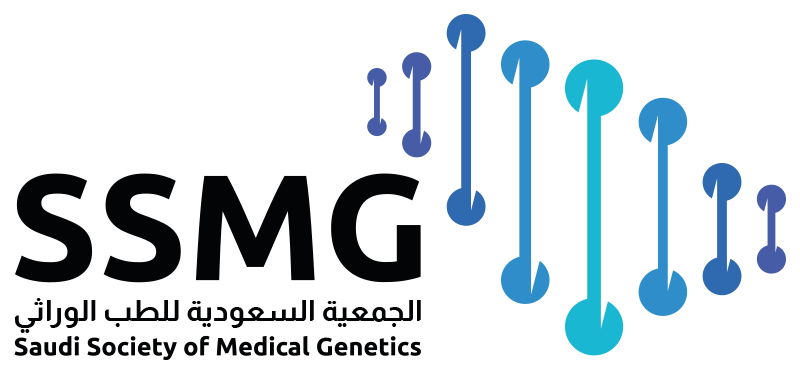
| Review Article | ||
| How to Cite this Article |
| Pubmed Style Alghamdi S, Alkwai S, Ilyas M. The role of C-terminal tensin-like (Cten) gene in cancer metastasis. JBCGenetics. 2018; 1(1): 2-9. doi:10.24911/JBCGenetics/183-1531548689 Web Style Alghamdi S, Alkwai S, Ilyas M. The role of C-terminal tensin-like (Cten) gene in cancer metastasis. https://www.jbcgenetics.com/?mno=978 [Access: April 26, 2024]. doi:10.24911/JBCGenetics/183-1531548689 AMA (American Medical Association) Style Alghamdi S, Alkwai S, Ilyas M. The role of C-terminal tensin-like (Cten) gene in cancer metastasis. JBCGenetics. 2018; 1(1): 2-9. doi:10.24911/JBCGenetics/183-1531548689 Vancouver/ICMJE Style Alghamdi S, Alkwai S, Ilyas M. The role of C-terminal tensin-like (Cten) gene in cancer metastasis. JBCGenetics. (2018), [cited April 26, 2024]; 1(1): 2-9. doi:10.24911/JBCGenetics/183-1531548689 Harvard Style Alghamdi, S., Alkwai, . S. & Ilyas, . M. (2018) The role of C-terminal tensin-like (Cten) gene in cancer metastasis. JBCGenetics, 1 (1), 2-9. doi:10.24911/JBCGenetics/183-1531548689 Turabian Style Alghamdi, Saleh, Sarah Alkwai, and Mohammad Ilyas. 2018. The role of C-terminal tensin-like (Cten) gene in cancer metastasis. Journal of Biochemical and Clinical Genetics, 1 (1), 2-9. doi:10.24911/JBCGenetics/183-1531548689 Chicago Style Alghamdi, Saleh, Sarah Alkwai, and Mohammad Ilyas. "The role of C-terminal tensin-like (Cten) gene in cancer metastasis." Journal of Biochemical and Clinical Genetics 1 (2018), 2-9. doi:10.24911/JBCGenetics/183-1531548689 MLA (The Modern Language Association) Style Alghamdi, Saleh, Sarah Alkwai, and Mohammad Ilyas. "The role of C-terminal tensin-like (Cten) gene in cancer metastasis." Journal of Biochemical and Clinical Genetics 1.1 (2018), 2-9. Print. doi:10.24911/JBCGenetics/183-1531548689 APA (American Psychological Association) Style Alghamdi, S., Alkwai, . S. & Ilyas, . M. (2018) The role of C-terminal tensin-like (Cten) gene in cancer metastasis. Journal of Biochemical and Clinical Genetics, 1 (1), 2-9. doi:10.24911/JBCGenetics/183-1531548689 |
Muhammad Umair, Farooq Ahmad, Muhammad Bilal, Muhammad Arshad
JBCGenetics. 2018; 1(2): 66-76
» Abstract » doi: 10.24911/JBCGenetics/183-1530765389
Saleh Alghamdi, Sarah Alkwai, Mohammad Ilyas
JBCGenetics. 2018; 1(1): 2-9
» Abstract » doi: 10.24911/JBCGenetics/183-1531548689
Lamia Alsubaie, Saeed Alturki, Ali Alothaim, Ahmed Alfares
JBCGenetics. 2018; 1(1): 31-36
» Abstract » doi: 10.24911/JBCGenetics/183-1529928114
AlAnoud Al-Jarbou, Afnan Al-Turki, Suha Tashkandi, Eissa A. Faqeih
JBCGenetics. 2018; 1(1): 37-39
» Abstract » doi: 10.24911/JBCGenetics/183-1530040885
Maram Alojair, Abdulaziz Alghamdi, Kalthoum Tlili, Sateesh Maddirevula, Fowzan Sami Alkuraya, Brahim Tabarki
JBCGenetics. 2018; 1(1): 40-42
» Abstract » doi: 10.24911/JBCGenetics/183-1531469195
Muhammad Umair, Farooq Ahmad, Muhammad Bilal, Muhammad Arshad
JBCGenetics. 2018; 1(2): 66-76
» Abstract » doi: 10.24911/JBCGenetics/183-1530765389
Kimberly A Coughlan, Rajanikanth J Maganti, Andrea Frassetto, Christine M DeAntonis, meredith Wolfrom, Anne-Renee Graham, Shawn M Hillier, Steven Fortucci, Hoor Al Jandal, Sue-Jean Hong, Paloma H Giangrande, Paolo GV Martini,
JBCGenetics. 2019; 2(1): 28-39
» Abstract » doi: 10.24911/JBCGenetics/183-1542047633
Muhammad Umair, Farooq Ahmad, Muhammad Bilal, Safdar Abbas
JBCGenetics. 2018; 1(1): 10-18
» Abstract » doi: 10.24911/JBCGenetics/183-1532177257
Maram Alojair, Abdulaziz Alghamdi, Kalthoum Tlili, Sateesh Maddirevula, Fowzan Sami Alkuraya, Brahim Tabarki
JBCGenetics. 2018; 1(1): 40-42
» Abstract » doi: 10.24911/JBCGenetics/183-1531469195
Hadil Alahdal, Huda Alshanbari, Hana Saud Almazroa, Sarah Majed Alayesh, Alaa Mohammad Alrhaili, Nora Alqubi, Fai Fahad Alzamil, Reem Albassam
JBCGenetics. 2021; 4(1): 27-34
» Abstract » doi: 10.24911/JBCGenetics/183-1601264923
Muhammad Umair, Farooq Ahmad, Muhammad Bilal, Muhammad Arshad
JBCGenetics. 2018; 1(2): 66-76
» Abstract » doi: 10.24911/JBCGenetics/183-1530765389
Cited : 4 times [Click to see citing articles]
Muhammad Umair, Farooq Ahmad, Muhammad Bilal, Safdar Abbas
JBCGenetics. 2018; 1(1): 10-18
» Abstract » doi: 10.24911/JBCGenetics/183-1532177257
Cited : 4 times [Click to see citing articles]
Ahmed Alfares,
JBCGenetics. 2018; 1(2): 51-52
» Abstract » doi: 10.24911/JBCGenetics/183-1546945268
Cited : 4 times [Click to see citing articles]
Hadil Alahdal, Huda Alshanbari, Hana Saud Almazroa, Sarah Majed Alayesh, Alaa Mohammad Alrhaili, Nora Alqubi, Fai Fahad Alzamil, Reem Albassam
JBCGenetics. 2021; 4(1): 27-34
» Abstract » doi: 10.24911/JBCGenetics/183-1601264923
Cited : 2 times [Click to see citing articles]
Alaa AlAyed, Manar A. Samman, Abdul Ali Peer-Zada, Mohammed Almannai
JBCGenetics. 2020; 3(1): 22-27
» Abstract » doi: 10.24911/JBCGenetics/183-1585816398
Cited : 2 times [Click to see citing articles]







